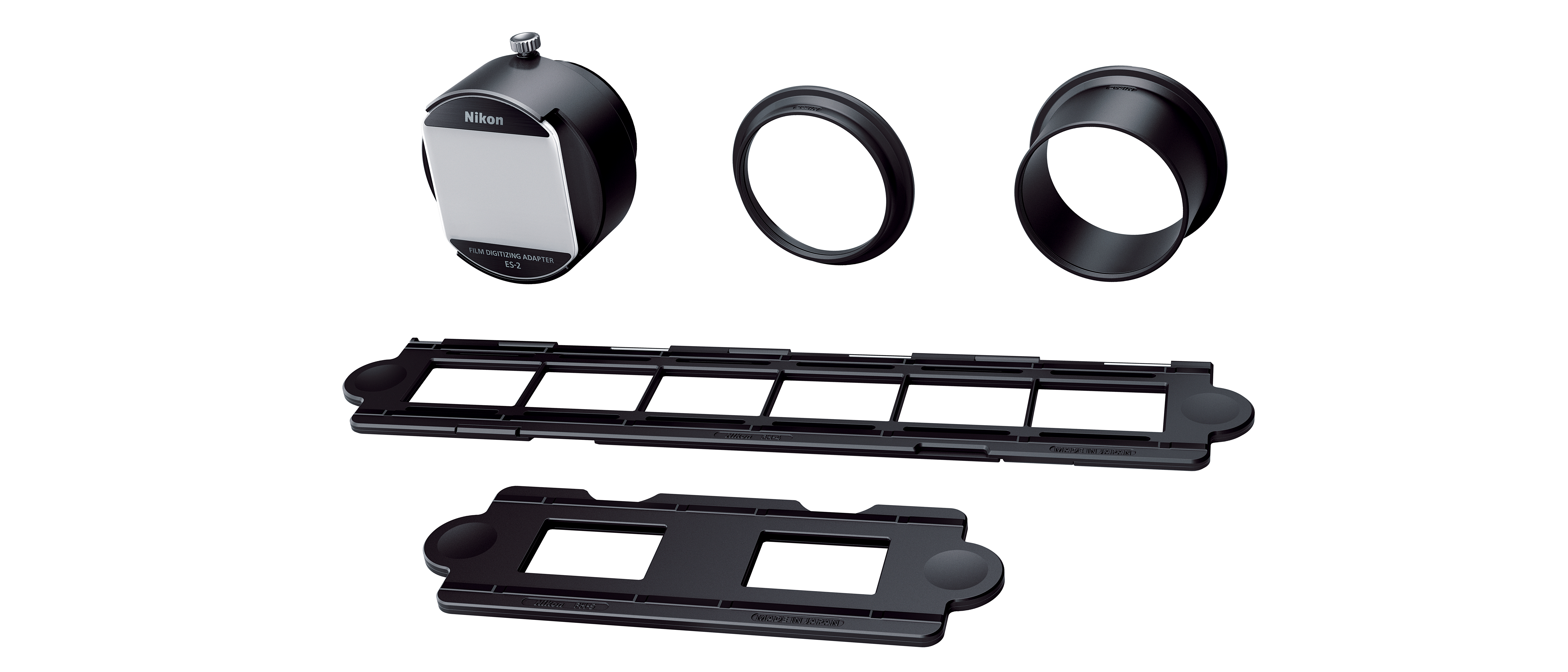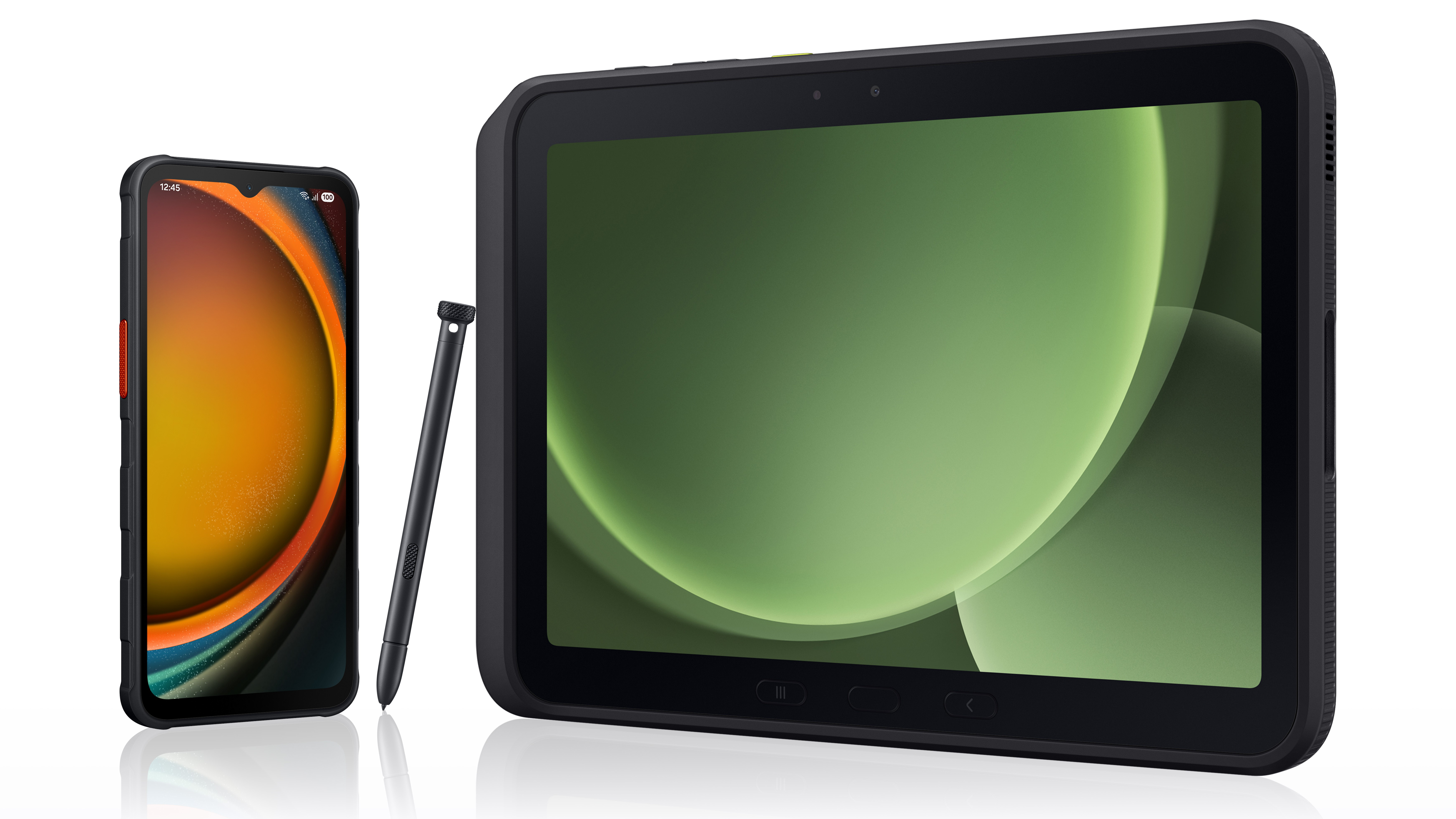Digital Camera World Verdict
The ES-2 Digitizing Adapter kit works well, but it feels overpriced for a collection of plastic holders and adapters, given that you will also need one of the three compatible macro lenses, but it does make use of the D850’s resolving power. However, a quality flatbed or dedicated film scanner can be had for less than the combined cost of an ES-2 kit and lens, though the scanning process can be much slower.
Pros
- +
Simple slide/negative digitization system
- +
Automatic inversion of negatives with Nikon D850
- +
Faster duplication than with film scammer
Cons
- -
You need a compatible macro lens & camera
- -
Limited filter mount options
- -
High cost of kit
Why you can trust Digital Camera World
Nikon’s Film Digitizing Adapter ES-2 kit was designed to harness the power of the Nikon D850’s 45.7MP resolving power to create exceptionally high-resolution digital scans of your old analogue film negatives and slides – whether they be color or monochrome. You will also need a compatible Nikon macro lens in order to use the ES-2.
Although launched for use with the D850, lots have people have used this kit with other Nikon cameras including the 45 megapixel mirrorless full-frame Nikon Z7 and Z7 II. In terms of macro lens, The ES-2 Digitizer can be mounted on Nikon’s AF-S DX Micro 40mm f/2.8G, AF-S Micro 60mm f/2.8 ED, or AF Micro 60mm f/2.8D. The two 60mm lenses require 62mm adapter rings, included in the ES-2 kit. The recent Z-mount Nikkor Z MC 105mm f/2.8 VR S also has a 62mm filter ring, making it a suitable choice for use with the kit.
The ES-2 kit is actually far simpler than its price tag suggests. In the box is the ES-2 adapter itself. This is similar to a lens hood, but can be extended/retracted to fine-tune focus; its front is covered by a translucent panel that illuminates your films evenly from behind. Into the adapter you can then slide either the FH-4 Strip Film Holder, or the FH-5 Slide Mount Holder – both included in the kit. The final two elements in the kit are a pair of adapter rings, required for mounting the ES-2 on Nikon’s 60mm f/2.8 Micro lenses.
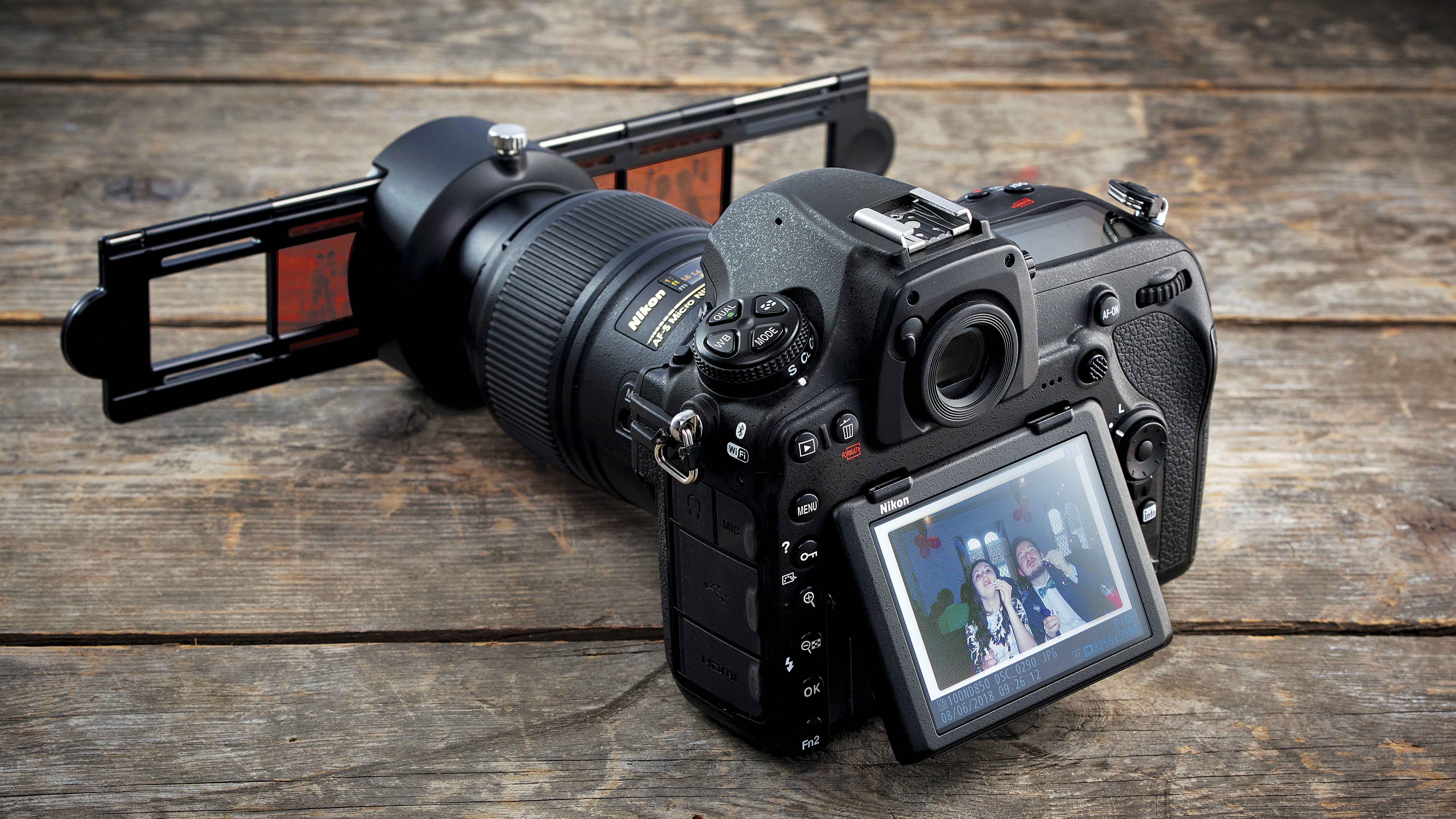
The only other item required – apart from the camera – is some form of lighting directed at the front of the ES-2 to illuminate your film or slides. A small daylight-balanced LED light panel is ideal, preferably one with a high color rendering index to ensure accurate color illumination.
With the digitizing adapter screwed to your lens’s filter thread and film mounted in the holder, you’re ready to scan. The D850 needs to be in Live View, whereupon you can press the ‘i’ button and scroll down to the Negative Digitizer option (not available on other Nikon cameras). This lets you choose between scanning monochrome or color negatives, if you go for the latter, the camera will automatically invert the colors from negative to positive. It’s then just a matter of lining up your exposure to scan and manually focus (activating focus peaking can help with this).
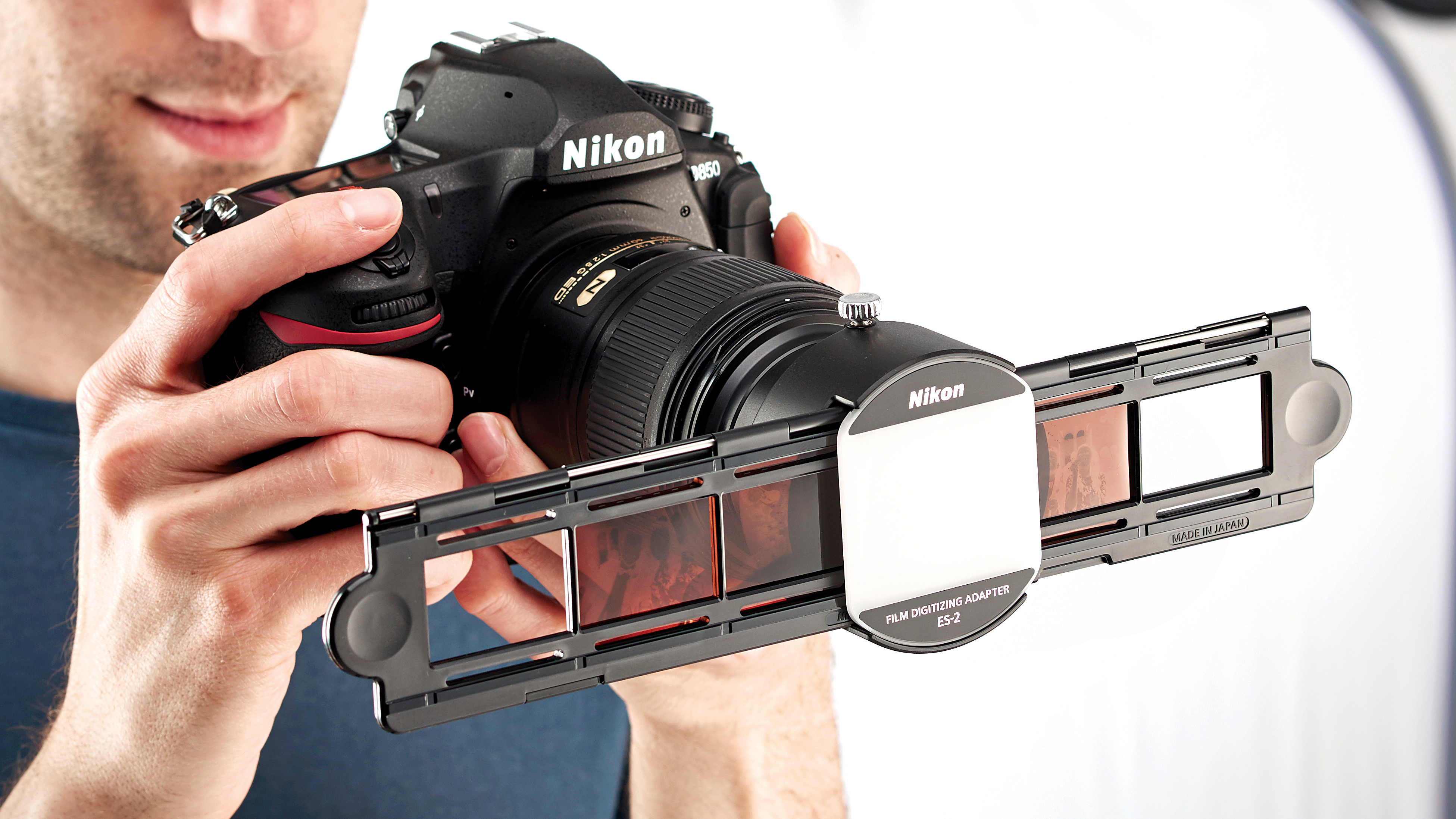
Nikon has been keen to make the process as quick and easy as possible, but this comes with compromises… There are no options for adjusting color or contrast in-camera, and the images are saved as high quality JPEGs, with no Raw option if you use the Negative Digitizer option. But you can do the processing in your image editor later, thereby allowing you to shoot the image in Raw.
You also need to be careful when scanning multiple film negatives, as although the film holder has indentations that automatically aligns each exposure, it’s still easy to knock the film out of alignment.
Performance
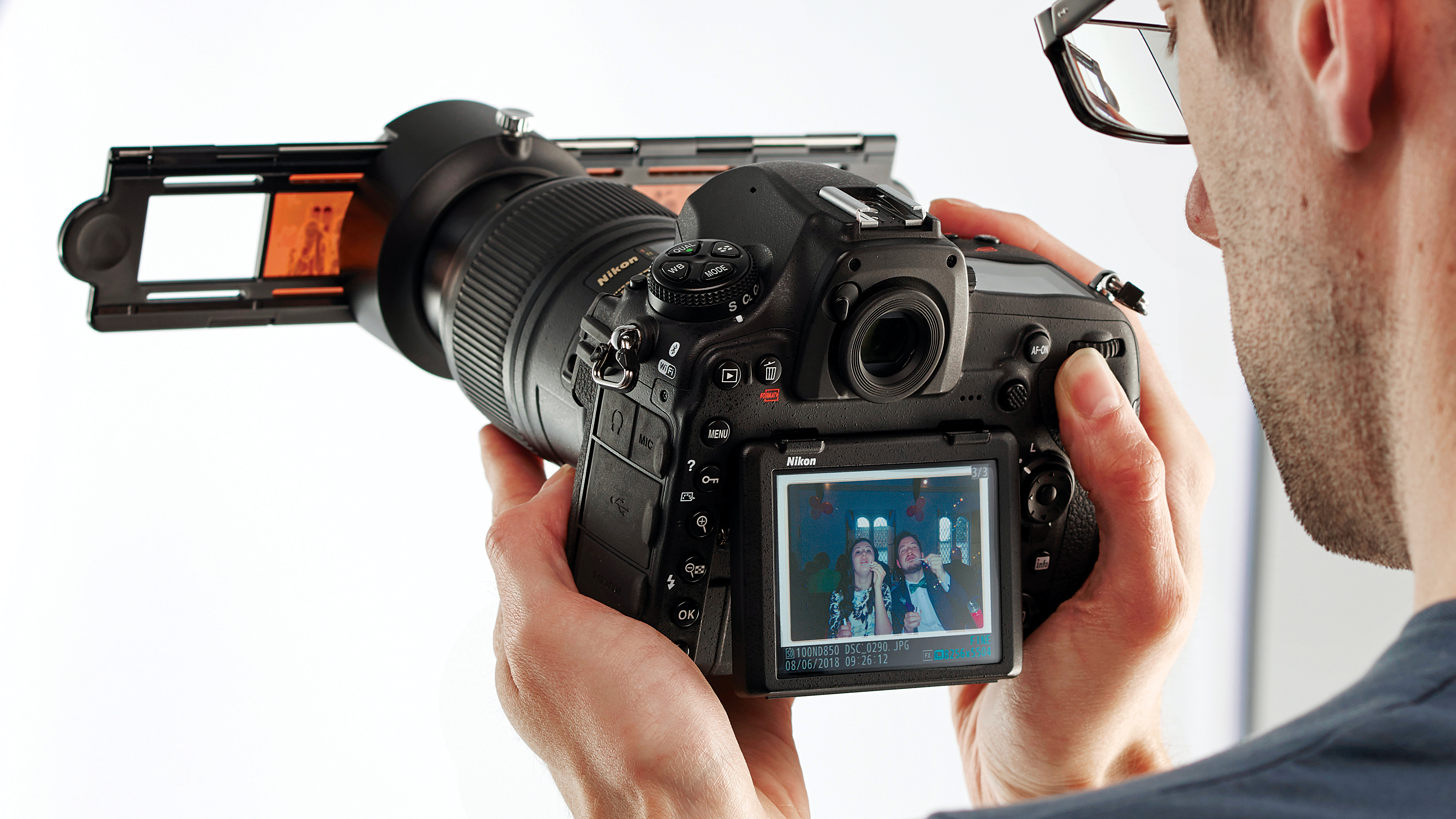
With some time, patience and practice it’s possible to achieve incredibly detailed digital copies of your old analogue photos. You can even get copies of formats that exceed the resolution of super-slow 35mm film stocks, like the legendary Kodachrome 25 or Fujifilm Velvia 50. However, while detail may be flawless, image quality isn’t entirely perfect.
When scanning C41 color negatives, the D850’s automatic color inversion isn’t always accurate, and you may need to manually remove a color cast to get the best possible quality copies.
If you end up scanning multiple exposures of a similar scene, this can result in the camera automatically choosing a slightly different overall tone for each exposure. Meaning that you’ll need to do further post-processing to match color across a batch of shots. The restricted dynamic range of even high-quality JPEGs could also be undesirable if you’re out to make the best possible digital copies of your highly prized analogue images.
Read more
Best film scanners
Best film cameras
Best macro lenses
Best Nikon cameras
Ben is the Imaging Labs manager, responsible for all the testing on Digital Camera World and across the entire photography portfolio at Future. Whether he's in the lab testing the sharpness of new lenses, the resolution of the latest image sensors, the zoom range of monster bridge cameras or even the latest camera phones, Ben is our go-to guy for technical insight. He's also the team's man-at-arms when it comes to camera bags, filters, memory cards, and all manner of camera accessories – his lab is a bit like the Batcave of photography! With years of experience trialling and testing kit, he's a human encyclopedia of benchmarks when it comes to recommending the best buys.
